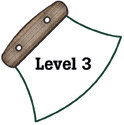
Alaska Science
Key Element A11
A student who meets the content standard should understand that similar features are passed on by genes through reproduction (Heredity).
 |
Alaska Science A student who meets the content standard should understand that similar features are passed on by genes through reproduction (Heredity). |
|
Performance Standard Level 3, Ages 11–14
|
|
|
|
Sample Assessment Ideas
|
Standards Cross-References
|
||
|
National Science Education Standards Plants and animals closely resemble their parents. (Page 129) Many characteristics of an organism are inherited from the parents of the organism, but other characteristics result from an individual’s interactions with the environment. Inherited characteristics include the color of flowers and the number of limbs of an animal. Other features, such as the ability to ride a bicycle, are learned through interactions with the environment and cannot be passed on to the next generation. (Page 129) The characteristics of an organism can be described in terms of a combination of traits. Some traits are inherited and others result from interactions with the environment. (Page 157) |
Benchmarks In some kinds of organisms, all the genes come from a single parent, whereas in organisms that have sexes, typically half of the genes come from each parent. (Page 108) In sexual reproduction, a single specialized cell from a female merges with a specialized cell from a male. As the fertilized egg, carrying genetic information from each parent, multiplies to form the complete organism with about a trillion cells, the same genetic information is copied in each cell. (Page 108) |
|
Table of Contents | Return to Alaska Native Knowledge Network